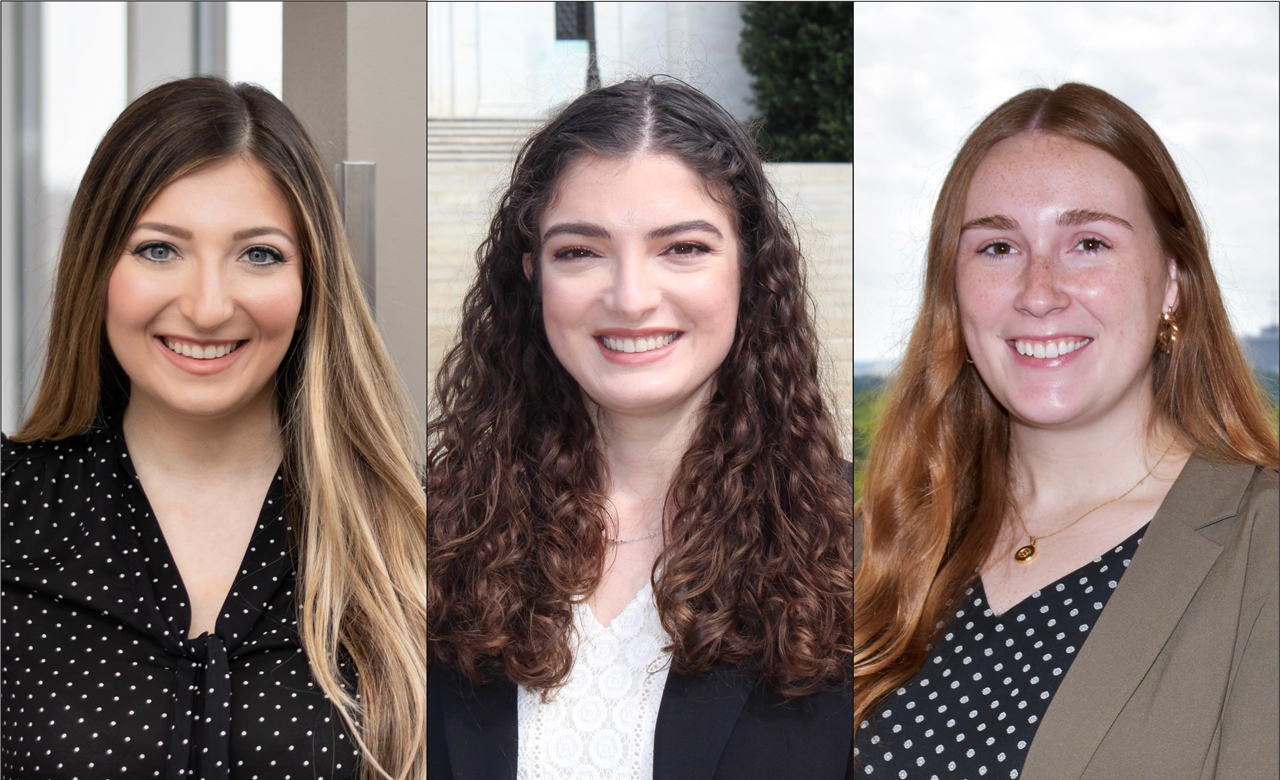Brittany Botescu, PharmD; Paria Sanaty Zadeh, PharmD; and Bella Blankenship, PharmD

The layered learning practice model (LLPM) allows new practitioner pharmacists to precept students and other learners while also being precepted by more experienced practitioners. This is mutually beneficial because it facilitates professional development among learners and preceptors and maximizes benefits to the organization.
The LLPM is championed in a variety of pharmacy practice settings, with numerous examples within the profession. Layered learning can entail collaborations spanning departments and shared experiences across an organization, including at APhA.
Precepting within layers
Brittany Botescu, PharmD, as a recent APhA executive resident, is at the center of layered learning opportunities. After supporting APhA’s policy process throughout residency, she now ushers residents through those same responsibilities as APhA senior manager of governance and policy. Botescu channels prior experiences to guide resident activities, such as developing policy background materials and facilitating committee meetings. She also engages learners in discussions on the broader aspects of policy development.
“Reflecting on mentors in my career, they not only impart their knowledge to new practitioners, but also embody continuous professional development. To me, layered learning means building upon my previous experiences while empowering others to do the same,” said Botescu.
Bella Blankenship, PharmD, is in the same executive resident role as Botescu was previously. “As a recent graduate and current association management resident, I have seen firsthand how layered learning positively contributes to the professional growth of everyone involved,” said Blankenship. “There is much to be gained from combining perspectives across a diversity of backgrounds and experience levels. Taking part in layered learning has shaped my viewpoints on a vast array of issues impacting our profession.”
During APhA’s 2022–2023 policy cycle, Botescu precepted Blankenship to prepare a comprehensive policy paper and lead policy discussions with members. Blankenship’s residency experience presents opportunities for her to participate in the LLPM with her preceptors and APPE students. As student pharmacists rotate through the association, Blankenship guides them on APhA’s practice and advocacy priorities while deepening her work in these areas.
A shared element between Blankenship’s and Botescu’s experiences is the precepting and mentorship received from the APhA practice and professional affairs team, which includes Paria Sanaty Zadeh, PharmD, associate director of practice and science programs. Sanaty Zadeh serves as a subject matter expert in the annual policy process, reviewing APhA executive residents’ policy projects and providing input on proposed policy statements. She precepts residents before, during, and after Academy policy committee meetings, delegate caucuses, and APhA House of Delegates sessions. To foster in-depth precepting experiences, she integrates real-world insights from her work in varied pharmacy settings.
“I frequently draw on prior experiences from practicing and precepting in an academic medical center with various learners. I’m thrilled to continue incorporating layered learning and offering a dynamic learning experience in my role at APhA. Seeing the teaching and learning process unfold together is energizing and provides an enriched team-based experience,” said Sanaty Zadeh.
Takeaway
Layered learning is not unique to associations. Similar opportunities are possible in all traditional and nontraditional pharmacy practice settings. ■
|
Tips for success with layered learning
|
|
Postgraduate preceptors
|
New practitioner preceptors
|
Experienced preceptors
|
|
1. Reflect on past learning experiences. What preceptor skills facilitated a positive experience?
|
1. Reflect on past preceptors whom you would like to embody. What made them effective?
|
1. Reflect on previous precepting experiences. What methods helped you succeed?
|
|
2. Ensure your precepting role is clearly delineated in the layered learning arrangement.
|
2. Understand your role as a learner and preceptor. Approach both with humility and curiosity.
|
2. Advise newer preceptors on balancing their precepting role with other responsibilities.
|
|
3. Seek constructive feedback early in your career to hone your skills.
|
3. Be receptive to feedback as a newer preceptor, and offer thoughtful feedback to others.
|
3. Establish bidirectional feedback with all learners. Incorporate suggestions into future learning experiences.
|
|
4. Learn from past successes and opportunities for continuous improvement.
|
4. Embrace the continuous nature of learning. Be attentive, patient, and adaptable to change.
|
4. Encourage strategies for continuous improvement for all, including yourself.
|